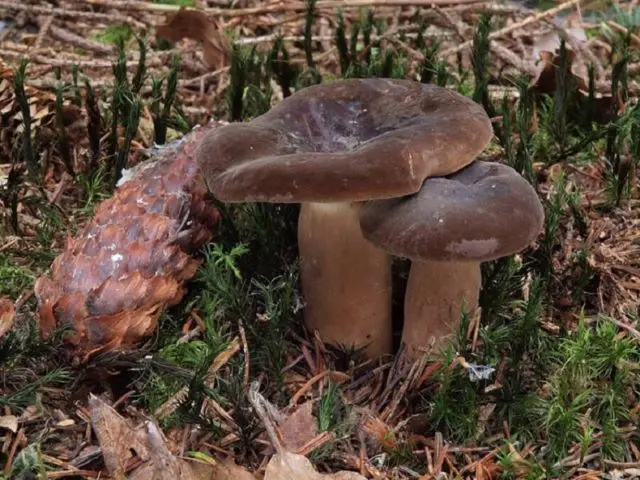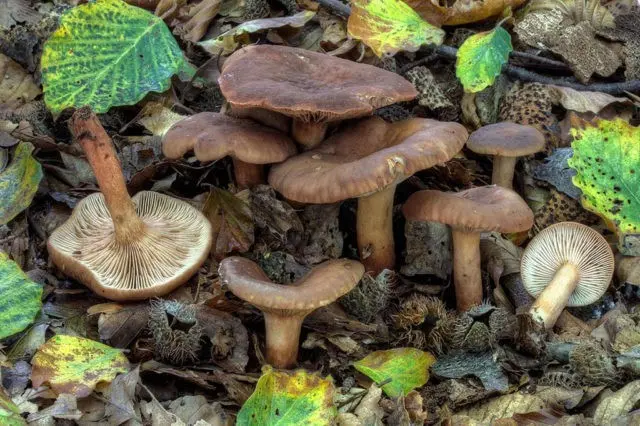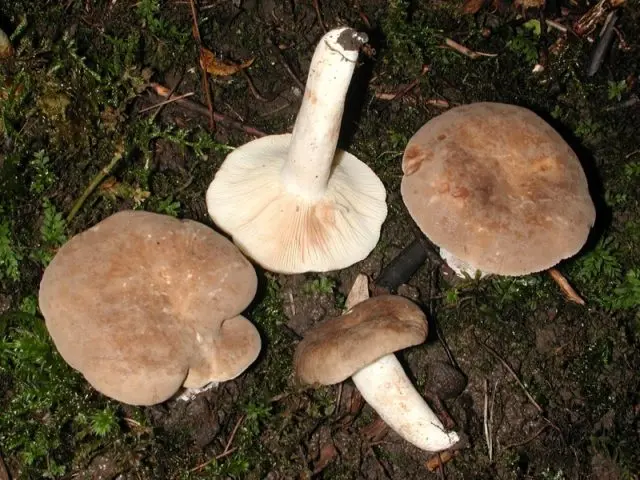Contents
Milky brown or woody, also called moor-headed milkweed, is a representative of the Russula family (Russulaceae), genus Milky (Lactarius). In appearance, the mushroom is very beautiful, dark brown in color with a velvety surface of the cap and stem.
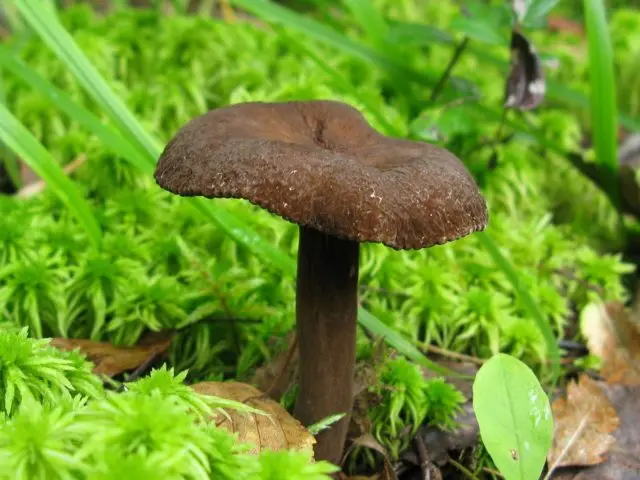
The milky brown got its name because of the characteristic chestnut color of the hat.
Where does the brown milkweed grow?
The distribution range of the brown milkweed is quite wide, although the fungus itself is rare. This species grows in Europe and in the forests of central Our Country, namely in the Urals, Siberia and the Far East. You can also meet it in the foothills and mountains of the Caucasus and Crimea.
It forms mycorrhiza mainly with spruce (very rarely with pine), therefore it mostly grows in coniferous forests. It can also be found in mixed forests with an admixture of spruce, as well as in mountainous areas. Prefers marshy and acidic soils.
Fruiting is stable, falling on the period from late July to late September. The peak of productivity is observed at the beginning of September. Fruiting bodies grow singly or in small groups.
What does a wood milker look like
The hat of a young brown milky has a pillow-shaped shape with folded edges. With growth, it opens, but retains a bulge in the center, sometimes slightly pointed. At a more mature age, the mushroom cap becomes funnel-shaped with a small central tubercle, while the edges become wavy-ribbed. The diameter of the cap varies from 3 to 7 cm. The surface is velvety to the touch, dry. The color can be from light brown to dark chestnut.
The hymenophore is lamellar, formed from accreted or descending, often located and wide plates. In a young specimen, they are white or with a yellowish tinge, in maturity they acquire a darker ocher color. Under mechanical action, the plates turn pinkish. The spores under the microscope are almost spherical in shape with an ornamented surface, in the mass they are a yellow powder.
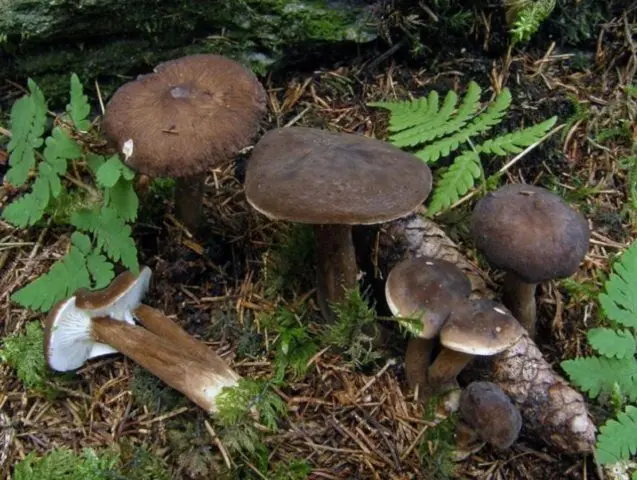
The wood lactiferous cap becomes wrinkled and rather dry with age.
The leg is of moderate size, reaching up to 8 cm in height and 1 cm in girth. It has a cylindrical shape, tapering downward, often curved. Has no cavity inside. The color is identical to the hat, often lighter at the base. The surface is longitudinally wrinkled, dry and velvety.
The flesh is dense, but very thin, fragile in the cap, and quite hard, leathery in the stem. Its color is white or creamy. At the break, it turns red at first, later it becomes a yellow-ocher color. Abundantly secretes white milky juice, which gradually turns yellow in the air. The smell and taste are slightly mushroomy, without specific features.
According to the description and photo, the brown milky is a medium-sized mushroom with a very beautiful chocolate color, which is quite difficult to confuse with other representatives of the mushroom kingdom.
Is it possible to eat brown lactic acid
The brown milky (Lactarius lignyotus) is considered conditionally edible, but only the cap of the mushroom is suitable for eating, since its leg is very fibrous and tough. Due to its rarity, it is not popular with mushroom pickers. They also prefer not to collect it, because in terms of taste and nutritional values, the mushroom belongs to the fourth category.
False doubles
The brown milky, which can be seen in the photo, is similar in appearance to the following mushrooms:
- resinous black milky – also belongs to a number of conditionally edible, but the fruiting bodies are larger and the pulp has a sharper taste;

- milky brownish – is edible, grows in deciduous forests, the color is slightly lighter;

- zoneless milker – an edible mushroom with a flatter cap and smooth edges, light brown in color.

Rules for collection and use
The brown milkweed is collected infrequently due to its rarity and low nutritional value. You can meet him in early September in coniferous forests. In the case of collection, fruiting bodies are subjected to preliminary soaking for at least 2 hours, after which they are boiled and salted. In this case, only hats are suitable, since the legs are too hard, they do not soften even after heat treatment.
Conclusion
The brown milky is a rare and very beautiful representative of the mushroom kingdom. But due to its low nutritional value, it is collected quite rarely, giving preference to higher quality species. In addition, in addition to salting, fruiting bodies are no longer suitable for cooking other dishes.










